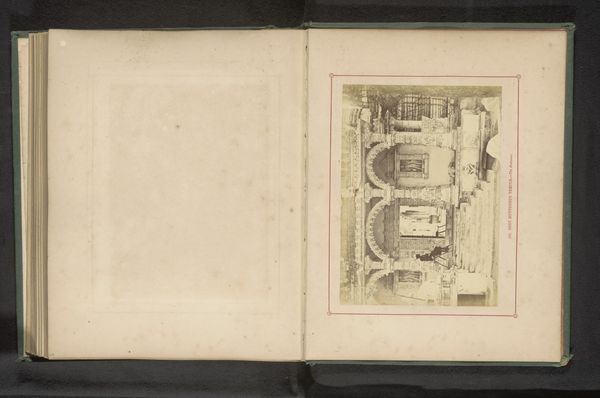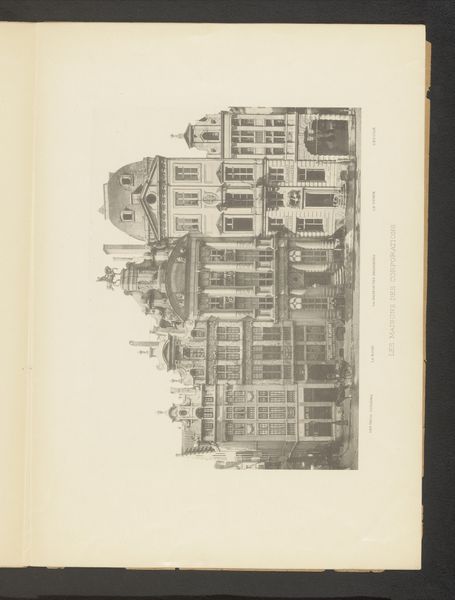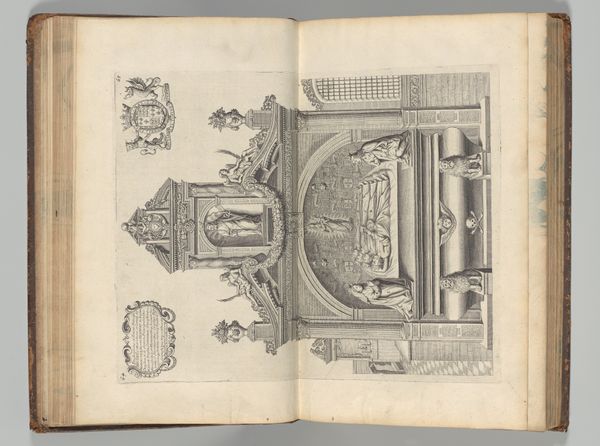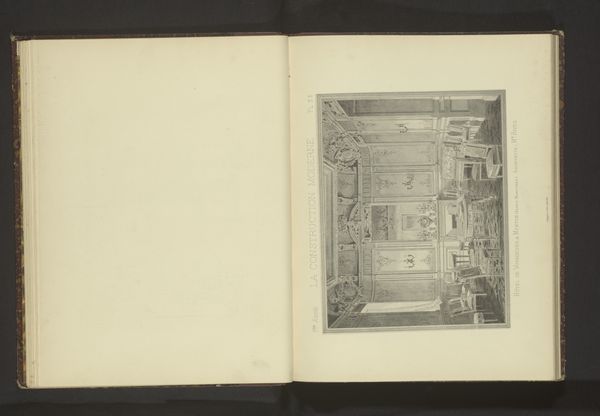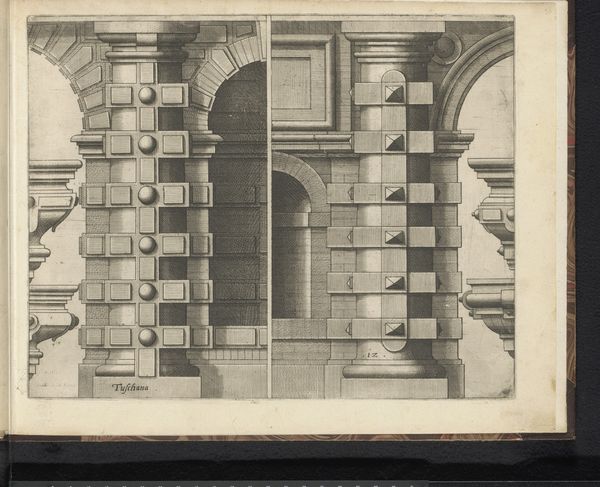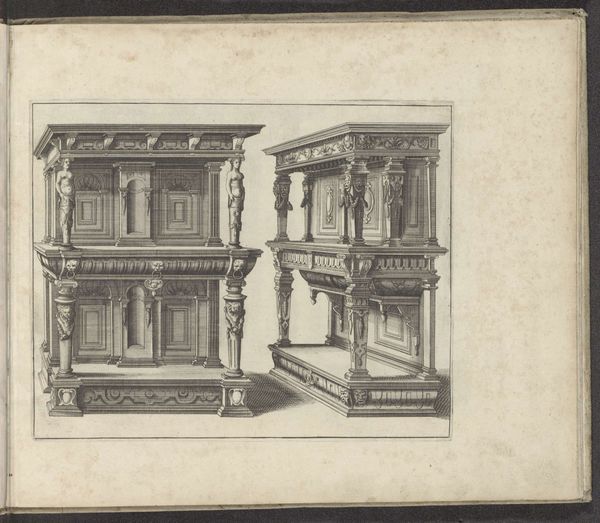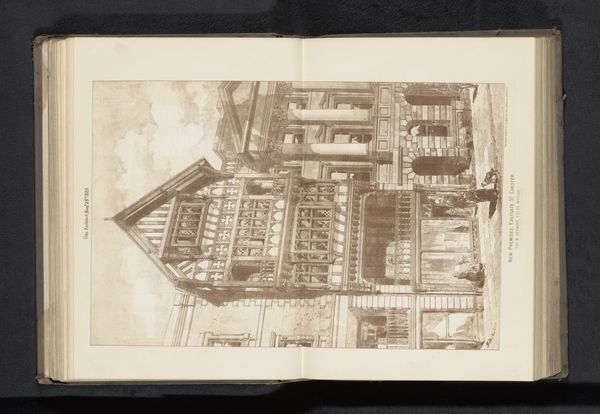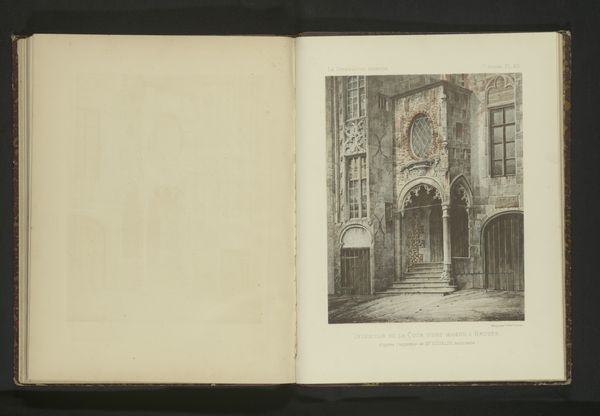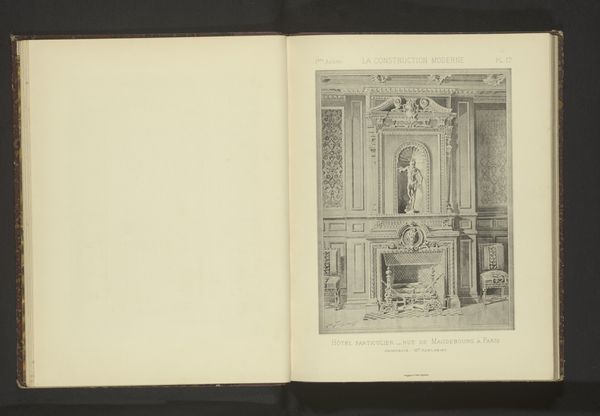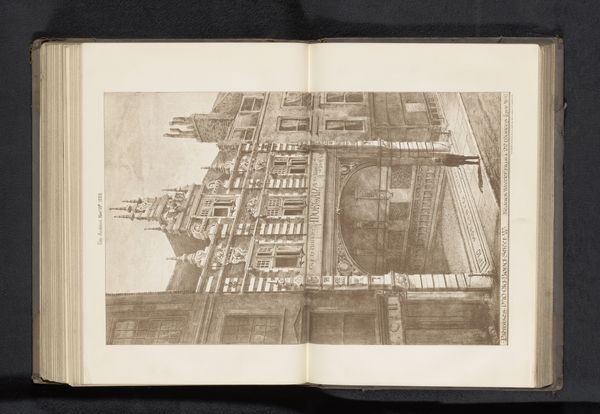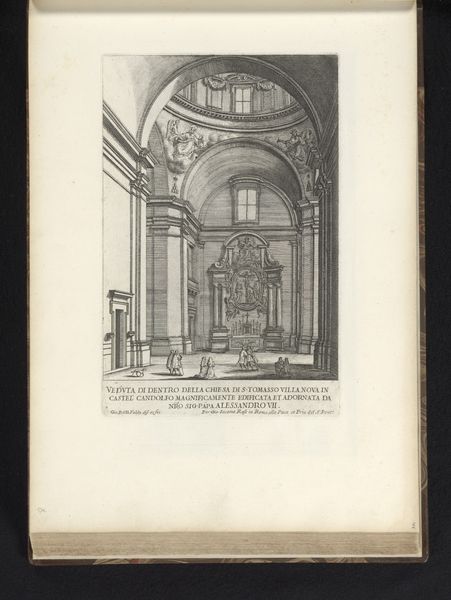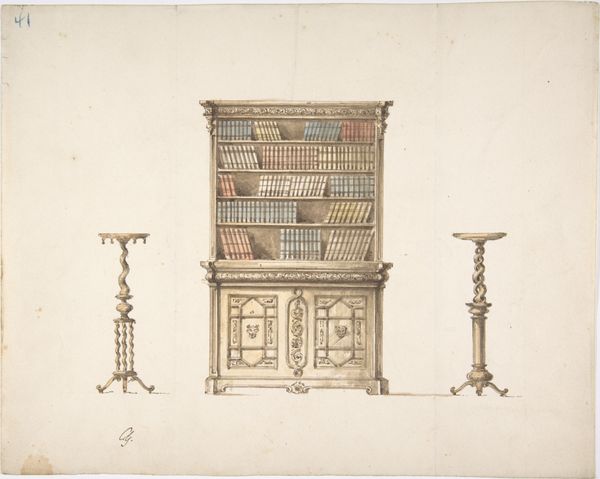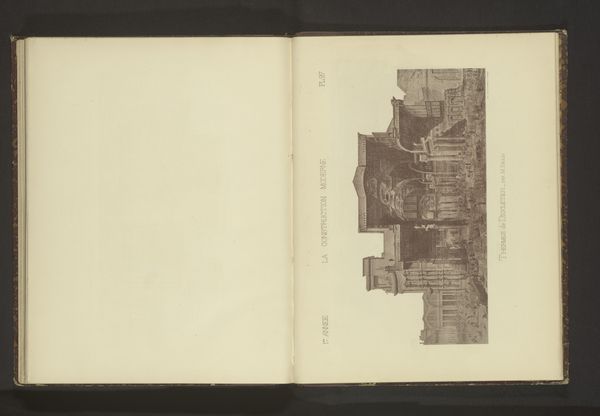
Reproductie van een ontwerp van een bouwplan voor Cornhill 69 te Londen before 1889
0:00
0:00
drawing, print, etching, paper, architecture
#
drawing
# print
#
etching
#
paper
#
academic-art
#
architecture
#
building
Dimensions: height 207 mm, width 279 mm
Copyright: Rijks Museum: Open Domain
Curator: This etching, made before 1889 by Sprague & Co., presents an architectural plan titled, "Reproductie van een ontwerp van een bouwplan voor Cornhill 69 te Londen." It’s a detailed drawing, showcasing the design of a building at a prominent London address. Editor: The building looks so formal. The facade, filled with repeating windows, appears heavy and imposing. There are so many windows! It feels almost… oppressive in its uniformity, but with some elegant touches on the roof. Curator: This work embodies academic art ideals, focusing on precise representation. Sprague & Co. were known for their high-quality reproduction work, and this etching served a very specific purpose: disseminating architectural plans to a wider audience. The meticulous detail highlights the engineering and design innovations of the time, emphasizing functionality. Editor: I find myself questioning who this architecture was truly serving. These imposing structures, while testaments to human achievement, were also symbols of institutional power, defining who belonged and who was excluded. London’s architectural landscape was certainly a visual marker of class. Curator: Absolutely. London’s architecture has always reflected its economic and social hierarchies. These plans, published and circulated, could have reinforced notions of progress. Sprague & Co.'s involvement also illustrates how crucial reproductive media were in shaping architectural tastes and trends, establishing what "good" building design looked like at the time. Editor: This building feels inherently connected to the historical context in which it was designed, embodying not only structural ideas but political ones too. Seeing a city through its blueprints forces one to reckon with issues of privilege and ownership within the modern city. Curator: Studying such designs really brings to light the institutional networks and cultural values that shape our built environment. Editor: Exactly. These images offer a compelling perspective on the past, asking vital questions about the narratives we weave through design and the lasting implications of such aesthetics.
Comments
No comments
Be the first to comment and join the conversation on the ultimate creative platform.
